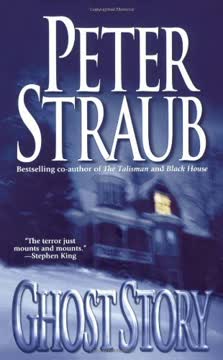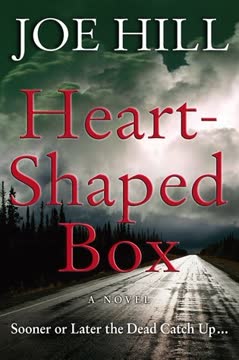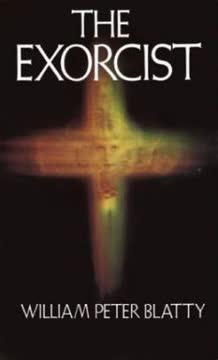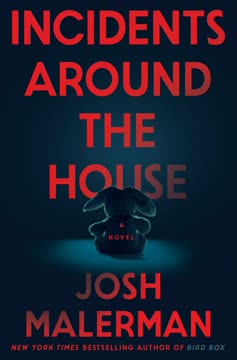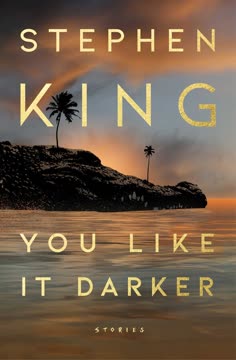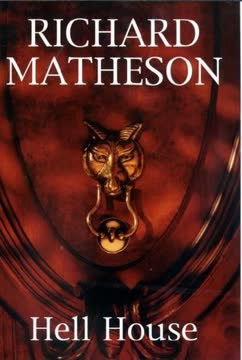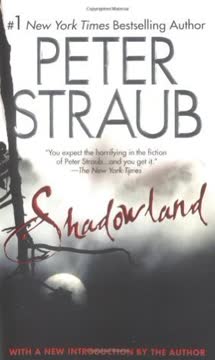Plot Summary
Haunted Road Trip to Milburn
A man drives through the night with a young girl, avoiding cities and taking back roads, haunted by a past he refuses to disclose. The journey is tense, filled with precautions to avoid detection, hinting at a dark purpose. The child is eerily composed, speaking only to express her needs. They stop at a shopping center to rest, where the man ties the child to him with rope. The man is plagued by a sense of impending doom, and the journey continues through the night, filled with country music and unanswered questions about the man's past and the child's identity.
The Mysterious Chowder Society
In Milburn, New York, a group of elderly men known as the Chowder Society meets regularly to share ghost stories. The group includes Ricky Hawthorne, Sears James, Lewis Benedikt, and John Jaffrey. They are haunted by the mysterious death of their friend Edward Wanderley, which occurred a year ago. The stories they tell are a way to cope with their fears and the strange occurrences in their town. Each member is plagued by nightmares, and they suspect that something supernatural is at play. The society decides to invite Edward's nephew, Donald Wanderley, to help them uncover the truth.
A Ghostly Invitation
Donald Wanderley, a writer and Edward's nephew, arrives in Milburn after receiving a letter from the Chowder Society. He is intrigued by the town's eerie atmosphere and the society's request for his help. Donald is haunted by his own past, including the mysterious death of his brother, David. As he explores Milburn, he senses that the town is hiding dark secrets. The society hopes that Donald's experience with the supernatural will help them understand the strange events surrounding Edward's death and the nightmares that plague them.
The Enigmatic Anna Mostyn
Anna Mostyn, a striking young woman, arrives in Milburn and checks into the Archer Hotel. She claims to be the niece of Eva Galli, a woman with a mysterious past in the town. Anna's presence unsettles the members of the Chowder Society, as she seems to know more about their past than she should. Her arrival coincides with a series of strange occurrences, including the death of Dr. John Jaffrey, a member of the society. Anna's connection to Eva Galli and her intentions remain unclear, adding to the town's growing sense of unease.
Secrets of the Past Unveiled
The members of the Chowder Society are forced to confront their past, particularly the events surrounding Eva Galli. Eva was a beautiful and enigmatic woman who disappeared under mysterious circumstances years ago. Her connection to the society and the recent events in Milburn are shrouded in mystery. As the society delves deeper into their memories, they begin to realize that the past is not as buried as they thought. The arrival of Anna Mostyn and the death of Dr. Jaffrey suggest that the past is returning to haunt them.
The Unraveling of Dr. Jaffrey
Dr. John Jaffrey, a member of the Chowder Society, is found dead after jumping off the bridge. His death is ruled a suicide, but the society suspects that something more sinister is at play. Jaffrey had been plagued by nightmares and a sense of impending doom, similar to the other members. His death forces the society to confront the reality of the supernatural events in Milburn. As they struggle to understand the connection between Jaffrey's death, Anna Mostyn's arrival, and their own past, the society realizes that they are in a battle against forces beyond their understanding.
A Haunting Breakfast at Lewis's
Lewis Benedikt wakes to a strange breakfast smell in his home, though no one is there. The unsettling experience reminds him of the supernatural events surrounding his wife's death years ago. Haunted by these memories, Lewis seeks solace in a hunting trip with his friend Otto, hoping to escape the eerie occurrences that seem to be closing in on him. The woods offer a temporary reprieve, but the specter of his past and the mysterious forces at play in Milburn linger in his mind.
Peter's Desperate Search for Answers
Peter Barnes, troubled by recent events and his mother's strange behavior, skips school to find Lewis Benedikt. Hitchhiking to Lewis's house, Peter hopes to confront him about his mother's involvement with Lewis and the strange occurrences in Milburn. However, upon arrival, he finds his mother already there, and a terrifying encounter with supernatural forces leaves him questioning reality and fearing for his life.
The Final Confrontation in Milburn
As the snowstorm rages, Don Wanderley, Peter Barnes, and Ricky Hawthorne prepare for a final confrontation with the supernatural forces plaguing Milburn. They suspect that the malevolent entity, Anna Mostyn, is hiding in the Hollow, a part of town with a dark history. Armed with a Bowie knife and an axe, they set out to find her, knowing that failure could mean the end for them and the town. Their journey through the snow is arduous, but they are driven by the need to end the terror that has claimed so many lives.
The Last Stand at the Rialto
Don, Peter, and Ricky track the supernatural entities to the Rialto Theater, where they confront Gregory and Fenny Bate. In a brutal fight, they manage to kill the Bates, but not without suffering injuries. The victory is bittersweet, as they realize that Anna Mostyn is still at large. The battle at the Rialto is a turning point, proving that the nightwatchers can be defeated, but also highlighting the danger they still face.
A New Beginning for Milburn
With the supernatural threat eliminated, Milburn begins to recover. The snow melts, and life slowly returns to normal. Ricky plans a trip to Europe with his wife, Stella, while Peter prepares for college. Don, having fulfilled his promise to his uncle and the Chowder Society, contemplates his future. The bonds formed during the battle against the nightwatchers remain strong, offering hope for a brighter future for the survivors.
Characters
Donald Wanderley
Donald is a writer and the nephew of Edward Wanderley. He arrives in Milburn at the request of the Chowder Society, hoping to uncover the truth behind his uncle's mysterious death. Donald is haunted by his own past, including the death of his brother, David. He is drawn to the town's eerie atmosphere and the society's ghostly tales, sensing that they hold the key to understanding the supernatural events that plague them.
Ricky Hawthorne
Ricky is a member of the Chowder Society and a lawyer in Milburn. He is a kind and thoughtful man, deeply affected by the death of his friend Edward and the nightmares that haunt him. Ricky is determined to uncover the truth behind the strange occurrences in the town, even as he struggles with his own fears and doubts.
Sears James
Sears is Ricky's law partner and a member of the Chowder Society. He is a practical and skeptical man, but the events in Milburn challenge his beliefs. Sears is haunted by a story from his past involving a troubled student, and he is determined to find a rational explanation for the supernatural occurrences in the town.
Lewis Benedikt
Lewis is a member of the Chowder Society and a wealthy, charismatic man. He uses his charm to hide his deeper emotions and fears. Lewis is haunted by the death of his wife, Linda, and the nightmares that plague him. He is determined to uncover the truth behind the strange events in Milburn, even as he struggles with his own inner demons.
John Jaffrey
John is a member of the Chowder Society and a respected doctor in Milburn. He is haunted by nightmares and a sense of impending doom, which ultimately lead to his tragic death. John's secret morphine addiction and the mysterious circumstances of his death suggest that he was battling forces beyond his control.
Anna Mostyn
Anna is a striking young woman who arrives in Milburn, claiming to be the niece of Eva Galli. Her presence unsettles the members of the Chowder Society, as she seems to know more about their past than she should. Anna's connection to Eva Galli and her intentions remain unclear, adding to the town's growing sense of unease.
Peter Barnes
Peter is a high school student caught in the web of supernatural events in Milburn. Driven by fear and confusion, he seeks answers from Lewis Benedikt and confronts the terrifying figures of Gregory Bate and Fenny. Peter's journey reflects the town's struggle to uncover the truth behind the haunting occurrences and the personal toll it takes on its residents.
Gregory Bate
Gregory Bate is a malevolent supernatural entity, once human, who now serves a darker force. His encounters with Peter Barnes reveal his true nature and the threat he poses to Milburn. Gregory's character represents the embodiment of the supernatural evil that haunts the town and its residents.
Fenny Bate
Fenny is Gregory Bate's brother, a supernatural entity with a childlike appearance but a sinister nature. His interactions with Peter Barnes highlight the deceptive and dangerous nature of the supernatural forces at play in Milburn. Fenny's character adds to the eerie atmosphere and the sense of impending doom in the town.
Plot Devices
The Chowder Society
The Chowder Society is a group of elderly men who meet regularly to share ghost stories. The society serves as a narrative device to explore the supernatural events in Milburn and the characters' haunted pasts. The stories they tell are a way to cope with their fears and the strange occurrences in their town, and they provide a framework for the unfolding mystery.
Nightmares
The members of the Chowder Society are plagued by nightmares that hint at the supernatural forces at play in Milburn. These nightmares serve as a plot device to reveal the characters' fears and the connection between their past and the present events. The nightmares are a manifestation of the characters' guilt and the unresolved mysteries that haunt them.
The Bridge
The bridge in Milburn is a significant plot device, serving as the site of Dr. John Jaffrey's death. It symbolizes the boundary between the known and the unknown, the living and the dead. The bridge is a place of transition and transformation, where the characters confront their fears and the supernatural forces that threaten them.
The Snowstorm
The relentless snowstorm in Milburn serves as a backdrop for the supernatural events, heightening the sense of isolation and danger. It symbolizes the town's entrapment by the malevolent forces and the struggle to break free from their grip.
The Bowie Knife
The Bowie knife, used by Peter to kill Anna Mostyn, represents the group's determination to fight back against the supernatural threat. It is a symbol of their courage and the hope for a future free from fear.
The Rialto Theater
The Rialto Theater is the site of the climactic battle between the group and the Bates brothers. It serves as a metaphor for the struggle between good and evil, with the theater's darkness and chaos reflecting the turmoil within Milburn.
Analysis
"Ghost Story" by Peter Straub delves into the nature of fear, guilt, and redemption. The novel explores how past actions and unresolved guilt can manifest as supernatural forces, haunting individuals and communities. The Chowder Society's ghost stories serve as a metaphor for the characters' attempts to confront their fears and seek redemption for past mistakes. The novel also examines the power of storytelling as a means of understanding and coping with the unknown. Through the characters' journeys, Straub highlights the importance of facing one's fears and the possibility of redemption, even in the face of seemingly insurmountable evil. The novel's blend of psychological horror and supernatural elements creates a chilling and thought-provoking narrative that resonates with readers long after the final page.
Last updated:
FAQ
```markdown
Synopsis & Basic Details
What is Ghost Story about?
- Small Town, Dark Secrets: Ghost Story centers on Milburn, New York, a seemingly idyllic town where four elderly men, members of the Chowder Society, gather to tell ghost stories. Their ritual is a coping mechanism for a shared, deeply buried secret from their youth involving a mysterious woman named Eva Galli, whose past is now returning to haunt them.
- Supernatural Retribution: The narrative unfolds as a malevolent, shapeshifting entity, linked to Eva Galli and her supernatural "children" (Gregory and Fenny Bate), systematically targets the Chowder Society and their associates. This entity seeks revenge for a past transgression, manifesting as terrifying nightmares, unexplained deaths, and psychological torment that unravels the fabric of the town.
- Unraveling a Personal and Collective Haunting: Donald Wanderley, nephew of the recently deceased Edward Wanderley (a former Chowder Society member), is drawn into Milburn's escalating horror. A writer of supernatural fiction, Donald must confront his own traumatic past and the blurred lines between fiction and reality to understand and combat the ancient evil threatening to consume Milburn and everyone he cares about.
Why should I read Ghost Story?
- Masterclass in Psychological Horror: Peter Straub's Ghost Story is a deeply unsettling novel that masterfully blends classic ghost story tropes with profound psychological depth. It explores how guilt, memory, and suppressed trauma can manifest as tangible horrors, making readers question the nature of reality and the human mind.
- Rich, Layered Narrative: The book is celebrated for its intricate plotting, complex characters, and evocative prose. Straub weaves together multiple timelines and perspectives, slowly revealing layers of a decades-old mystery that impacts every corner of Milburn, offering a rewarding experience for readers who appreciate depth and subtlety.
- Enduring Thematic Resonance: Beyond the scares, Ghost Story delves into universal themes of innocence lost, the burden of the past, the corrupting influence of secrets, and the struggle for redemption. Its exploration of evil as an adaptive, intelligent force that preys on human weakness provides a chilling and thought-provoking experience.
What is the background of Ghost Story?
- Post-Vietnam, Pre-Digital Anxiety: Set in the late 1970s, Ghost Story subtly reflects the anxieties of its era, a period of disillusionment and uncertainty in America. The small-town setting, Milburn, acts as a microcosm for a nation grappling with its own hidden histories and moral compromises, where traditional values are eroding, and a new, more insidious form of evil can take root.
- Literary Allusions and Gothic Tradition: Straub draws heavily from classic American Gothic literature, particularly Nathaniel Hawthorne and Henry James, evident in the novel's epigraphs and thematic concerns. The story subverts traditional ghost narratives by presenting its supernatural entities not as passive spirits, but as active, intelligent predators, evolving the genre beyond simple hauntings.
- Author's Personal Influences: Peter Straub himself has spoken about the influence of his childhood fears and the power of storytelling on the novel. The Chowder Society's ritualistic sharing of tales mirrors the primal human need to articulate and contain fear through narrative, a concept deeply embedded in Straub's own approach to horror writing.
What are the most memorable quotes in Ghost Story?
- "Ghosts are always hungry.": This chilling epigraph, attributed to R.D. Jameson, perfectly encapsulates the novel's central premise. It suggests that the supernatural entities are not merely passive echoes of the past but active, consuming forces driven by an insatiable need, preying on the living for sustenance and influence.
- "What was the worst thing you've ever done? I won't tell you that, but I'll tell you the worst thing that ever happened to me... the most dreadful thing...": This recurring line, first spoken by Dr. Jaffrey, defines the Chowder Society's ritual and the novel's narrative structure. It highlights the characters' deep-seated guilt and their tendency to externalize their internal horrors, setting the stage for the unfolding tragedy.
- "I am you.": Spoken by the young girl Angie to Don Wanderley in the prologue, and later echoed by Gregory Bate to Peter Barnes, this phrase is a terrifying revelation of the shapeshifters' true nature. It signifies their ability to embody and exploit the deepest fears, desires, and unresolved traumas of their victims, blurring the lines of identity and self.
What writing style, narrative choices, and literary techniques does Peter Straub use?
- Labyrinthine and Layered Prose: Straub employs a dense, literary prose style, rich in descriptive detail and psychological introspection. His sentences are often long and complex, mirroring the intricate, interwoven nature of the plot and the characters' convoluted memories. This creates an immersive, almost hypnotic reading experience.
- Multiple Perspectives and Unreliable Narration: The story is told through various viewpoints, primarily Don Wanderley's journal entries and third-person limited perspectives focusing on the Chowder Society members. This narrative choice introduces ambiguity and unreliable narration, as characters interpret events through their own biases, fears, and guilt, forcing the reader to piece together the truth.
- Subtle Foreshadowing and Symbolic Imagery: Straub masterfully uses subtle foreshadowing, recurring motifs (like snow, mirrors, and specific colors), and potent symbolism to build dread and connect disparate events. The narrative is replete with metaphorical language, transforming mundane objects and settings into harbingers of supernatural horror, deepening the novel's thematic resonance.
Hidden Details & Subtle Connections
What are some minor details that add significant meaning?
- The "Dr. Rabbitfoot" Novel Concept: Don Wanderley's unwritten novel, Dr. Rabbitfoot's Revenge, initially seems like a meta-fictional device, but its plot—a showman destroying a small town—becomes a chilling blueprint for the actual events in Milburn. The character of Dr. Rabbitfoot, described as "Alma in blackface, Alma with horns, tail and a soundtrack," directly foreshadows Gregory Bate's minstrel-like appearance and the shapeshifters' theatrical, manipulative nature. This detail highlights the blurring of fiction and reality, a core theme in Ghost Story analysis.
- Ricky Hawthorne's Bow Tie: Ricky's insistence on wearing bow ties, despite Stella's mild disapproval and changing fashion, is a subtle symbol of his adherence to tradition and his desire for a stable, ordered world. His later comment, "I'm not even wearing a bow tie," after the final confrontation, signifies the complete shattering of his old life and the loss of the decorum he clung to, marking a profound shift in his character arc and the town's reality. This detail is key to understanding Ricky Hawthorne's motivations.
- The "X.X.X." Cult: Anna Mostyn's casual mention of her friends belonging to a sinister cult named "Xala Xalior Xlati" (X.X.X.) initially seems like a youthful eccentricity or a lie. However, this seemingly throwaway detail subtly links Anna to a deeper, more ancient evil, hinting at the shapeshifters' organized, ritualistic nature and their long history of preying on humanity, adding a layer of occult horror to the themes in Ghost Story.
What are some subtle foreshadowing and callbacks?
- The "Moth in a Killing Jar" Epigraph: The epigraph to the Epilogue, "Moth in a Killing Jar," is a powerful callback to the shapeshifters' method of trapping and consuming their victims. It foreshadows Don's final confrontation with Angie/Alma, where he must metaphorically "kill" the moth to escape its deadly embrace, highlighting the predatory nature of the entities and the desperate struggle for survival. This phrase is crucial for Ghost Story ending explained.
- Sears James's Childhood Trauma with Viola Frederickson: Sears's vivid memory of stealing Viola Frederickson's blouse and his subsequent guilt, which he dismisses as "you old fool, you still feel guilty about that blouse," subtly foreshadows the shapeshifters' ability to exploit past transgressions. Viola Frederickson's death in a snowstorm, mentioned later, also connects to the shapeshifters' manipulation of weather and their historical presence in Milburn, linking personal guilt to the broader supernatural themes in Ghost Story.
- The Recurring Image of the Lynx: The lynx seen by the Chowder Society members after Eva Galli's "death" in the pond, and later by Ricky in his vision, is a direct manifestation of the shapeshifter. Don's later declaration, "This time we'll have to shoot the lynx," is a powerful callback that transforms a past hallucination into a concrete plan of action, signifying the shift from passive fear to active resistance against the supernatural, a key element in the Ghost Story analysis.
What are some unexpected character connections?
- Freddy Robinson's Idolization of Lewis Benedikt: Freddy Robinson, the insurance salesman, initially appears as a minor, somewhat pathetic character. However, his deep admiration and emulation of Lewis Benedikt, from his mannerisms to his choice of clothing and even his pursuit of younger women, reveals an unexpected connection. This highlights Freddy's yearning for a more glamorous, less provincial life, making his eventual, brutal death more tragic as he was trying to connect with the very forces that would destroy him. This connection adds depth to Freddy Robinson's motivations.
- Peter Barnes's Unseen Connection to the Bate Brothers: Peter's encounters with the "little boy" on the gravestone and the "man from the square" (Gregory Bate) are initially terrifying but also reveal a strange, almost magnetic pull. The shapeshifters' ability to appear to him, and their later claim "I am you, Peter," suggests a deeper, perhaps inherited, connection or vulnerability that makes Peter a prime target and a crucial player in the final confrontation. This is vital for understanding Peter Barnes's character development.
- Stella Hawthorne's Pragmatic Strength: While often portrayed as a socialite and a source of mild exasperation for Ricky, Stella's actions reveal an unexpected strength and practicality. Her immediate concern for Milly Sheehan after John's death, her clear-headed assessment of Harold Sims, and her decisive, violent act of self-defense against the shapeshifter (the Jehovah's Witness) with a hatpin, reveal a hidden resilience that contrasts sharply with the men's intellectualized fear. Her ability to "kill" one of the shapeshifters is a pivotal, unexpected moment, showcasing her as a formidable, if unconventional, heroine.
Who are the most significant supporting characters?
- Milly Sheehan, the Unseen Witness: John Jaffrey's housekeeper, Milly, is more than just a domestic presence. Her constant hovering and eavesdropping, initially irritating to the Chowder Society, position her as an unwitting witness to the unfolding horror. Her deep, almost maternal devotion to John and her later, grief-stricken accusations against the Chowder Society ("Murder Incorporated!") underscore the human cost of their secrets and the supernatural events. She represents the ordinary townspeople caught in the extraordinary terror.
- Omar Norris, the Town's Oracle: The perpetually drunk snowplow driver, Omar Norris, initially appears as a comic relief character. However, he becomes a crucial, albeit unreliable, witness to several key events, including John Jaffrey's jump and the mysterious animal killings. His drunken ramblings often contain fragments of truth or distorted insights, making him a kind of unwitting oracle whose observations are dismissed by the "sane" characters but prove to be disturbingly accurate. His character highlights the novel's theme of truth being found in unexpected places.
- Harold Sims, the Academic Foil: Harold Sims, Stella Hawthorne's academic lover, serves as a foil to the Chowder Society's intellectual but ultimately ineffective approach to the supernatural. His anthropological theories about "myth survival among the Amerinds" and the "Manitou" inadvertently provide Don Wanderley with crucial conceptual frameworks for understanding the shapeshifters. His eventual, pathetic downfall at Stella's hands, after attempting to rape her, underscores the shapeshifters' ability to corrupt even seemingly rational individuals and the dangers of intellectualizing evil without truly confronting it.
Psychological, Emotional, & Relational Analysis
What are some unspoken motivations of the characters?
- Chowder Society's Guilt-Driven Ritual: The Chowder Society's weekly ghost stories, while ostensibly a social ritual, are deeply rooted in unspoken guilt and a collective need for absolution. Their shared trauma from the Eva Galli incident, which they effectively suppressed for decades, manifests as recurring nightmares and a compulsive need to tell stories that externalize their fears. This ritual is a subconscious attempt to process and contain the horror they unleashed, rather than directly confronting their complicity in Eva's death. This is central to understanding Chowder Society motivations.
- Don Wanderley's Search for Self-Redemption: Don's initial motivation to come to Milburn is framed as helping his uncle's friends and investigating the supernatural. However, his deeper, unspoken drive is to understand and atone for his brother David's death, which he implicitly blames on Alma Mobley (Anna Mostyn). His journey is a quest for personal redemption, a desperate attempt to rewrite his own "ghost story" and prevent a similar tragedy from befalling others. This adds a profound layer to Donald Wanderley's character analysis.
- Anna Mostyn's Calculated Cruelty: Anna Mostyn's motivations are initially shrouded in mystery, but her actions reveal a calculated, almost artistic cruelty. Her shapeshifting and manipulation are not merely for survival but for a perverse form of entertainment and revenge. She delights in orchestrating the downfall of the Chowder Society, meticulously exploiting their weaknesses and past sins. Her goal is not just to kill them, but to make them suffer, to unravel their sanity, and to prove her superiority, reflecting a deep-seated, ancient malice rather than simple human vengeance. This is key to Anna Mostyn's motivations explained.
What psychological complexities do the characters exhibit?
- Lewis Benedikt's Mask of Charm and Inner Turmoil: Lewis presents himself as a charming, carefree playboy, but beneath this facade lies profound psychological complexity. His "public romances" with younger women mask deeper, more meaningful relationships with married women, and a desperate need to recapture the emotional intensity he lost with his wife, Linda. His internal struggle between his outward persona and his inner torment, exacerbated by the shapeshifters' influence, reveals a man deeply vulnerable to his past and his own self-deception. This highlights the psychological depth of Lewis Benedikt's character.
- Ricky Hawthorne's Moral Rigidity and Hidden Desires: Ricky, the "gentle lawyer," embodies a strict moral code and a desire for order, yet his dreams and his relationship with Stella hint at suppressed desires and anxieties. His initial resistance to confronting the supernatural stems from a psychological need to maintain his rational, ordered world. His eventual embrace of the fight, despite his fear, showcases a moral awakening and a willingness to break from his lifelong patterns, revealing a hidden strength and adaptability. This is crucial for Ricky Hawthorne's character analysis.
- Peter Barnes's Accelerated Maturation Through Trauma: Peter's journey is a rapid psychological maturation, forced by extreme trauma. Initially a typical teenager, he is thrust into a world of unimaginable horror, witnessing brutal deaths and confronting supernatural entities. His initial fear and confusion give way to a fierce determination and a surprising clarity of purpose. His ability to discern truth amidst the shapeshifters' illusions, and his unwavering resolve to fight back, mark a profound psychological transformation from innocence to a hardened, yet still empathetic, young man. This is a central aspect of Peter Barnes's character development.
What are the major emotional turning points?
- John Jaffrey's Suicide and the Chowder Society's Shattered Denial: John Jaffrey's dramatic suicide by jumping off the bridge is a major emotional turning point for the Chowder Society. It shatters their collective denial that their shared nightmares and stories are merely "old men going out of their minds." This event forces them to confront the tangible reality of the supernatural threat, moving them from intellectualizing their fears to experiencing raw grief and terror, and ultimately prompting them to seek Don Wanderley's help. This is a pivotal moment in the Ghost Story plot.
- Don's Realization of Alma/Anna's True Nature: Don's discovery that Alma Mobley, the woman who destroyed his brother, is the same entity as Anna Mostyn, the shapeshifter haunting Milburn, is a profound emotional turning point. This revelation transforms his personal grief and confusion into a clear understanding of the enemy. It shifts his emotional state from passive victim to active combatant, providing him with the clarity and resolve needed to lead the fight against the shapeshifters. This is crucial for Donald Wanderley's emotional analysis.
- Peter Barnes's Confrontation with His "Mother": Peter's encounter with the shapeshifter disguised as his mother, Christina Barnes, is an emotionally devastating turning point. The creature's taunts and the horrific vision of his mother's death force Peter to confront the ultimate betrayal and the true nature of the evil they face. His subsequent act of destroying the mirror, a symbol of illusion and self-deception, marks his complete rejection of the shapeshifters' psychological manipulation and his commitment to fighting them head-on, solidifying his role as a hero.
How do relationship dynamics evolve?
- The Chowder Society's Bonds Under Siege: The Chowder Society's relationships, initially built on shared history and ritualistic storytelling, are profoundly tested and transformed by the escalating supernatural threat. The deaths of John and Lewis, and Sears's own terrifying encounters, strip away their polite facades, revealing deep-seated affection, loyalty, and mutual fear. Their bond evolves from a comfortable, almost complacent friendship into a desperate alliance forged in shared trauma, highlighting the resilience of human connection in the face of overwhelming evil.
- Don and Peter's Mentor-Protégé Alliance: The relationship between Don Wanderley and Peter Barnes evolves rapidly from a tentative connection between an adult and a troubled teenager into a crucial mentor-protégé alliance. Don recognizes Peter's unique sensitivity and courage, while Peter finds in Don the only adult who truly believes and understands his terrifying experiences. This dynamic is vital for their survival, as Peter's direct encounters provide critical information, and Don's intellectual framework helps Peter process the horror, creating a powerful intergenerational partnership against the shapeshifters.
- Stella and Ricky's Rekindled Intimacy: Stella and Ricky's marriage, initially portrayed as comfortable but somewhat distant, undergoes a significant transformation. Ricky's nightmares and the escalating danger force him to confide in Stella, breaking years of emotional reserve. Stella's unexpected strength, her fierce protection of Ricky, and her decisive action against a shapeshifter rekindle their intimacy and mutual respect. Their relationship evolves into a partnership of shared vulnerability and resilience, demonstrating that even long-standing marriages can find new depth in crisis.
Interpretation & Debate
Which parts of the story remain ambiguous or open-ended?
- The Shapeshifters' Ultimate Origin and True Form: While the novel provides a theory about shapeshifters being ancient entities that inspire folklore and feed on human fear, their ultimate origin remains ambiguous. Are they truly extraterrestrial, interdimensional, or a primal force of nature? Their "true form" is never definitively shown, only glimpsed as a "swirling and varied as an oil slick" or a "piece of tortured flesh," leaving their fundamental nature open to interpretation. This ambiguity enhances the horror, as the unknown is often more terrifying than the clearly defined.
- The Extent of the Shapeshifters' Influence and Omniscience: The shapeshifters, particularly Anna Mostyn, demonstrate an uncanny ability to know intimate details of the characters' lives and predict their actions. However, the tapes reveal that she "can't predict things, she can just make good guesses." This leaves the exact extent of their influence and omniscience open to debate. Are they truly all-knowing, or are they exceptionally skilled at psychological manipulation and exploiting human patterns? This ambiguity raises questions about free will versus predestination within the narrative.
- The Nature of Don's "Breakdown" and the Reality of His Experiences: The Epilogue presents David Wanderley's explanation that Don's entire experience in Milburn was a hallucination, a severe mental breakdown triggered by his brother's death. This casts a shadow of doubt over the entire narrative, leaving readers to question whether the supernatural events were real or a product of Don's fractured mind. The novel deliberately leaves this unresolved, forcing readers to grapple with the subjective nature of reality and the power of the human imagination, a central theme in Ghost Story analysis.
What are some debatable, controversial scenes or moments in Ghost Story?
- The Ambiguity of David Wanderley's Death: The circumstances surrounding David Wanderley's death in Amsterdam are presented ambiguously. Don believes Alma Mobley (Anna Mostyn) was responsible, possibly by scaring him to death or directly causing his fall. However, the narrative also suggests David's own psychological vulnerabilities and his intense desire to "win" Alma. This leaves open the debate about whether David was a victim of supernatural malice or his own psychological demons, or a combination of both, making his death a controversial point in Ghost Story plot explained.
- The Chowder Society's Complicity in Eva Galli's Death: The revelation that the Chowder Society members were directly responsible for Eva Galli's
Review Summary
Ghost Story receives mixed reviews, with many praising its complex plot, atmospheric writing, and creepy scenes. Some consider it a classic of the horror genre, while others find it slow-paced and overly long. Critics appreciate Straub's character development and homage to classic ghost stories. The novel's ability to unsettle readers is frequently mentioned, though some find it less scary than anticipated. Overall, it's regarded as an ambitious, multi-layered work that demands patience from readers but rewards with a memorable horror experience.
Similar Books
Download PDF
Download EPUB
.epub digital book format is ideal for reading ebooks on phones, tablets, and e-readers.
